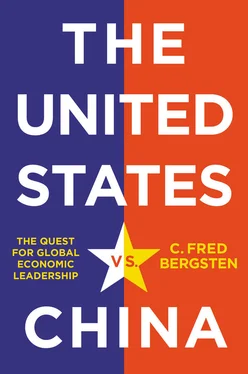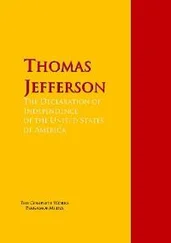1 ...8 9 10 12 13 14 ...17 What if, however, China (suddenly) concluded that time was no longer on its side? Demography has turned against it: the size of the labor force and overall population has either started to decline already or will do so soon. The reversion to state/party control of the economy may lower the growth rate considerably and lastingly. President Trump demonstrated that the United States would push back, and more skillful successors might well restore traditional US alliances and do so much more effectively. The international environment is likely to become more hostile in general. So it may be better to move sooner rather than later – especially as Xi Jinping wants to leave a personal legacy of historic accomplishments.
Recent Systemic Competition
A number of skirmishes in the emerging competition for global economic leadership have already taken place. The most institutional was China’s launch of the AIIB in 2015, which sought to meet a widely felt need for increased infrastructure spending in Asia (and elsewhere) and promised from the outset to follow international best practices and work closely with existing multilateral development institutions, while adding a few innovative features of its own. It appears to have done so to date and has become a useful, if modest, component of the existing system rather than a threat to it.
However, the Obama Administration chose to regard the Chinese initiative as an explicit challenge to the World Bank and the Asian Development Bank (ADB), and thus to “its” Bretton Woods system. The United States not only rejected China’s invitation to join the new institution but vigorously lobbied the other major non-regional countries to do so as well, converting a largely technical economic initiative into a high-profile political cause célèbre . Led by the United Kingdom, despite its “special relationship” with the United States, however, all of the others – except Mexico and Japan, which has reasons of its own to oppose Chinese leadership – soon accepted China’s invitation and the new Bank quickly attracted over 100 members.
The episode illustrates how China can simultaneously work to strengthen the current system while staking out a distinct leadership role within it, and indeed function as the “responsible stakeholder” that the United States has advocated for well over a decade (Zoellick 2005). It also shows how China can chip away at the US-led hegemonic coalition with initiatives that are substantively compatible with the traditional order and systemically non-threatening, especially if the United States mishandles the issue. The AIIB could turn out to be a prototypical case of constructive engagement of rising China into an evolving global economic order.
Another modest but constructive episode of systemic competition was the decision of the IMF in 2015 to include China’s renminbi (RMB) along with the dollar, euro, yen, and pound in the basket of currencies that determines the value of its systemic reserve asset, the Special Drawing Rights (SDR). China had been seeking the move, which formally recognized the RMB as an international reserve currency, for several years. The RMB did not fully meet the traditional criteria for inclusion, however, and the Fund had to re-interpret its rules to accommodate the Chinese – indicating how China can already prompt systemic change, albeit in a very modest way in this case. But no harm was done and China stepped into a marginally more important role in the system, presaging the likely increased international importance of its currency over the coming decades.
The United States accepted the step grudgingly, but at least did not replicate its folly of opposition as with the AIIB. The Trump Administration did oppose the creation of an additional $650 billion of Special Drawing Rights in the IMF, supported by China and almost everybody else, to help the global recovery from the pandemic and especially the poorer countries whose external debts had built up sharply as a result, but the Biden Administration reversed that position during its early days. President Trump apparently opposed any new increases in IMF quotas, opting instead to provide the Fund with needed resources through national lines of credit, at least partly to preclude the opportunity for a further increase in China’s voting share (Sobel 2019).
A subtle but politically significant clash arose over the scheduled annual meeting of the Inter American Development Bank in Beijing in 2019. The contentious issue was the representation of the government of Venezuela. Host China invited the sitting regime of Nicolas Maduro, but the United States and a number of other member countries rejected him in favor of the appointee of Juan Guaido, whom they recognized as the legitimate leader of the country. The result was a cancellation of the meeting, an unprecedented event in the history of the MDBs. It could be a harbinger of future disputes over national representations as China acquires increased clout in the operation of the different institutions (and the Taiwan issue remains a “core interest” of the mainland, which insisted on excluding the island nation from WHO deliberations on the coronavirus, despite its outstanding success in responding to it).
A much more important case is China’s BRI. This far-flung scheme, whose projects aim to reach $1 trillion or more, clearly promotes China’s commercial interests by providing new markets for the excess capacity of many of its capital goods industries; its financial interests by offering more productive use of its high savings and large foreign exchange reserves; and its foreign policy interests by strengthening its ties to (and potential influence over) a large number of participating countries and indebting them to Chinese lenders. Its financing is often devoid of the traditional economic and values conditions required by Western foreign aid programs. It has been criticized as creating “debt traps” and political liabilities for its recipients. It thus fits less comfortably within the current system, functioning without new multilateral or institutional machinery and with much greater political overtones. It can be viewed as a transactional (largely check-writing) alternative to the rules-based TPP devised by the United States (pre-Trump) and its Asian friends.
An even more complicated interaction is taking place with respect to Huawei and, more broadly, in the high-technology domain. The United States argues that Huawei, the world’s largest producer of network gear for phone companies and the no. 2 global smartphone brand, can be controlled by the Chinese government and thus poses unacceptable threats to its own national security and that of its allies. It has banned Huawei from government contracts, slapped export controls on sales of most US supplies (including key semiconductors) to the company, taken other legal actions against it, and urged its allies to adopt similar policies. Most Chinese view Huawei as a national treasure, and President Xi personally complained to President Trump on several occasions about its treatment by the United States.
The reactions have been mixed. A few allies have agreed. Some have rejected the US overtures on the view that Huawei’s economic efficiencies are highly attractive and that no security intrusions have been demonstrated. Others have adopted a middle course, creating new review mechanisms or otherwise responding to the company’s bids on a case-by-case basis. Suspicions are widespread that the United States is using a security rationale to advance its desire to restrain China’s development (as it misused that rationale to justify tariffs on steel and aluminum, and potentially on automobiles).
The security linkage, much more clearly than with the AIIB, further complicates the Huawei case. It gives the United States, with its much greater power and leadership in the security domain, more leverage than on the “purely economic” issues, especially with its close allies (as in NATO) and, since intelligence questions are a major part of the issue, even more so with its fellow “Five Eyes” members in that space (Australia, Canada, New Zealand, United Kingdom). Even here, however, it has been unable to win full support in the face of strong Chinese economic capability and political clout (and its own inability to present, at least publicly, a compelling case against the company).
Читать дальше












